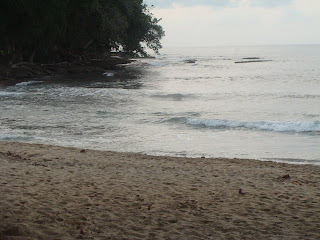These photos represent ideas which anyone can put into place to become more sustainable. This form of sustainability starts with producing your own food. In the US the average distance that food travels from farm to plate is 1,500 miles. That involves a huge amount of petroleum and reducing those "food miles" is one way everyone can have an impact on reducing their carbon footprint...not to mention the benefits of growing chemical free food that doesn't require large amounts of packaging and processing and is definitely fresher and in turn richer in nutrients and vitamins. In the urban landscape, food production is scarce and cities are considered food deserts. It only takes a small space to grow food, and it can start in your backyard or front porch or windowsill.
 In these photos you'll see how Earth University students are implementing techniques such as vertical planters, hyrdroponics, and raised beds, to name a few. Check it out... take action! Plant a seed! Sustainability can start with affecting how you sustain yourself!
In these photos you'll see how Earth University students are implementing techniques such as vertical planters, hyrdroponics, and raised beds, to name a few. Check it out... take action! Plant a seed! Sustainability can start with affecting how you sustain yourself! 

























